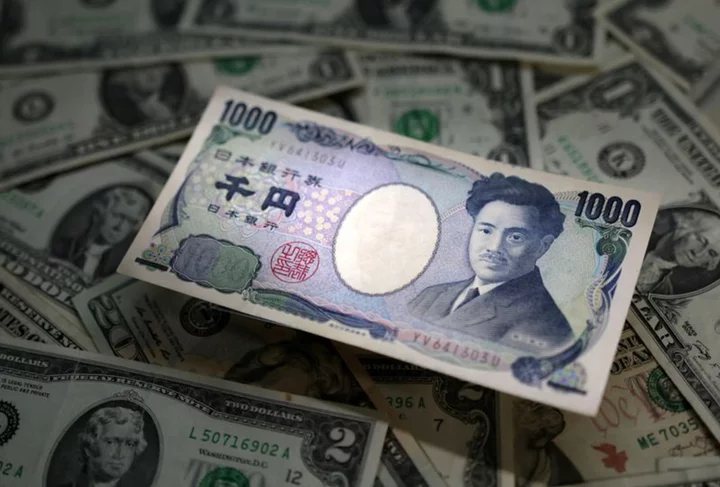By Rae Wee
SINGAPORE The yen hovered near a two-week high on Tuesday, boosted by a report that the Bank of Japan (BOJ) could further tweak a key bond yield policy tool when it announces its monetary decision later in the day.
The dollar looked set to end the month largely unchanged against a basket of currencies, having lost some steam after a roughly 2.5% gain in September. Yet, the greenback is being underpinned by risks of another rate hike from the Federal Reserve, analysts say, noting a still-resilient U.S. economy.
The Japanese yen was last at 149.13 per dollar, after jumping to a two-week high of 148.81 in the previous session following a Nikkei report that the BOJ could potentially allow 10-year Japanese government bond yields to rise above 1% at a keenly-awaited policy decision later on Tuesday.
"This of course may prove to be something of a red herring, and they may leave policy unchanged, instead offering a strong view that changes to the yield curve control cap are imminent," said Chris Weston, head of research at Pepperstone.
"All things being equal, a move to lift the YCC cap from 1% to 1.5% should bring out further (yen) buyers, and push USD/JPY and the crosses lower through trade."
Against the euro, the yen last stood at 158.24, having similarly risen to an over one-week high of 157.70 per euro on Monday. The Australian dollar last bought 94.50 yen.
In other currencies, the dollar edged broadly lower following a pick up in risk appetite, with Israel's ground offensive in Gaza seemingly less extensive than previously feared.
The dollar index last stood at 106.20.
Armoured Israeli forces attacked the Gaza Strip's main city from two directions on Monday and targeted the main road linking it to the south of Gaza, witnesses said.
"Israel's forces have begun their invasion of the Gaza strip in a restrained way - more slowly and deliberately than the fast-paced campaign designed to bring victory quickly," said Thierry Wizman, Macquarie's global FX and interest rates strategist.
"Traders... hope that restraint will leave the door open for a diplomatic de-escalation deal."
The euro looked set to reverse two straight months of losses with a slight 0.4% gain for October, with the single currency last steady at $1.0611.
Data on Monday showed inflation in Germany eased noticeably in October, while a separate report the same day showed Europe's largest economy shrank slightly in the third quarter.
Spain's 12-month inflation in October was unchanged from the previous month at 3.5%, preliminary data also out on Monday showed.
The figures come ahead of euro zone inflation data due later on Tuesday.
Sterling fell 0.07% to $1.2159 and was poised to give up more than 0.3% for the month, ahead of an interest rate decision by the Bank of England later in the week where expectations are for the central bank to stand pat.
"Central banks around the world are likely to respond to local economic conditions rather than take cues from the Fed, and we believe the Bank of England and European Central Bank will cut rates earlier than the FOMC," said economists at Wells Fargo.
"We continue to believe the U.S. dollar can broadly strengthen into early 2024."
Elsewhere, the Australian dollar shed 0.09% to $0.6368 and was headed for a monthly loss of more than 1%.
The New Zealand dollar lost 0.15% to stand at $0.5835 and was set for a 2.7% decline for October, pressured by fragile risk sentiment globally and as a surprisingly low reading of domestic inflation in the third quarter lessened the chance of another rate hike.
(Reporting by Rae Wee; Editing by Shri Navaratnam)









